
DUMAGUETE/DAUIN by Diving Squad - Traveller's Guide
Located along the southeast coast of Negros island, Dumaguete is a bustling seaside city. Lying 20km further south is Dauin; a small, underdeveloped beach town.
Generally “Dumaguete diving” and “Dauin diving” refer to the same group of dive sites found between these two places.
Whilst most scuba diving in the Philippines is characterised by epic coral, endless reef fish and turtles, Dumaguete diving – aka Dauin diving is different; consisting mainly of muck diving.
What the f*ck is muck diving you ask? It’s a term coined by scuba divers to describe dive sites with silty / sandy bottoms that at first appear like barren desserts.
However, look more closely and you’ll discover all manner of macro critters – colour changing cuttlefish, seahorses, pipefish and countless tiny nudibranch and crustaceans!
In this guide, I’ll talk about my experience diving Dumaguete / Dauin in April 2023 and provide you with handy tips such how to get there, when to go, other stuff to do and more. Let’s do this!
(Pssst! This is an info article. It covers stuff like diving highlights, season, etc. If you’re seeking accommodation check out: Where to Stay in Dumaguete / Dauin for Divers)!
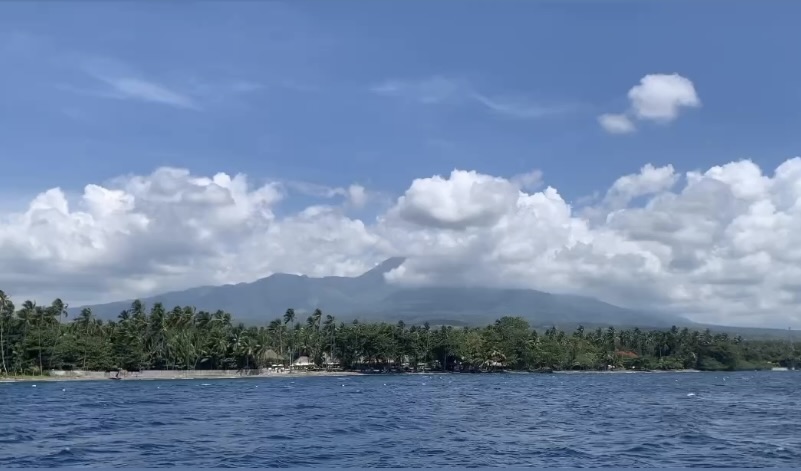
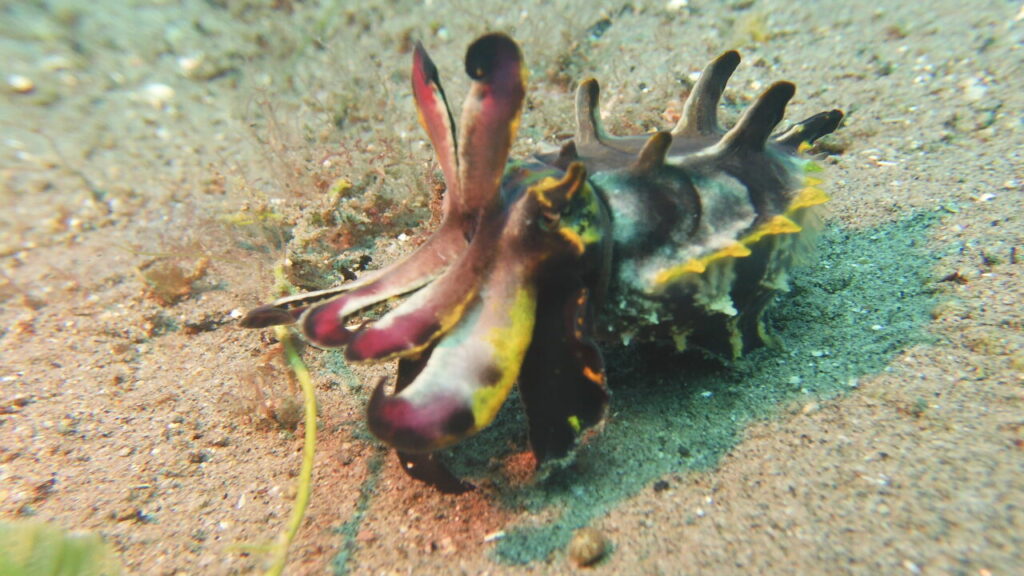
Awesome Animals you See Diving Dumaguete / Dauin
The dive sites between Dumaguete and Dauin are mainly defined by muck diving with macro critters. What’s really cool about these dive sites; is that they’re pretty off-the-beaten-track. Compared to the muck diving in Anilao, not a huge amount of divers make it out here, so you won’t see loads of other dive boats.
Although a few dive sites do have decent hard coral reef, without a doubt the main thing you’ll be looking for are macro critters along silty ocean-bottom dive sites. If there’s a macro species in the Philippines worth knowing about it can be found here. Here’s a few of the awesome little characters you can meet:
#1 Flamboyant Cuttlefish
If you were to take an LSD trip and place it into animal form you would have a Flamboyant cuttlefish – aka Metasepia Pfefferi (try saying that after a few red horse beers!).
It is a small species of cuttlefish measuring just 2 – 3 inches long and in neutral mode sports the vibrant colours of yellow, pink and orange. However upon being approached by divers, Flamboyant Cuttlefish often begin to change the colour and even texture of their skin, pulsating psychedelic patterns across their entire bodies like a miniature alien spacecraft.
Over the course of just five dives around Dauin I saw two of these most far out little dudes. Speaking of cephalopods I also saw two larger cuttlefish that were green, a big octopus plus a huge school of squid – noice!

#2 Seahorses
A distant cousin of the land-horse (both belonging to the Animalia kingdom), seahorses capture people’s hearts with their calm, elegant mannerisms. Like regular-horses they are also extremely awkward beings – every time I tried to line my camera up to photograph one, it would turn it’s head away to look in the opposite direction. Aw Neigh – not again!
There are a variety of small and medium sized seahorses around Dauin / Dumaguete and during my five dives I saw three different individuals!
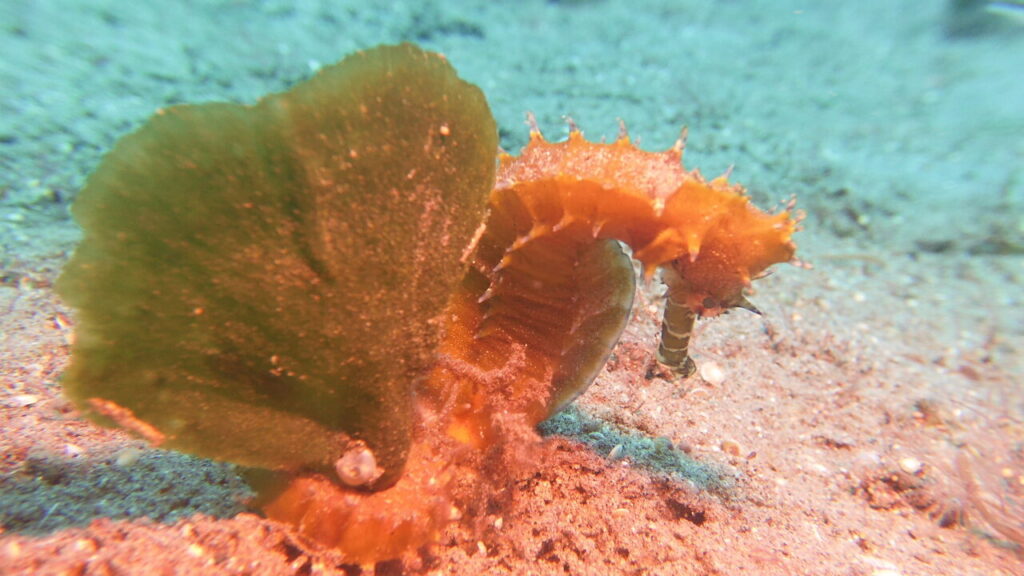
#3 Pygmy Frogfish
Related to angler fish, frogfish are ambush predators that mostly remain motionless upon the seafloor. They use their feet-like pectoral fins to “walk” and sneak up on unsuspecting prey which they then engulf whole with a mouth that swells up to be bigger than they are! (I’ve met people like that…).
There’s a whole bunch of frogfish species; some actually get pretty big but the ones you’re likely to see when diving Dauin / Dumaguete are pygmy frogfish which typically measure less than a centimetre across. With a good pair of eyes – or perhaps a good dive guide, you’re likely to spot quite a few of these – often at least one or more per dive!
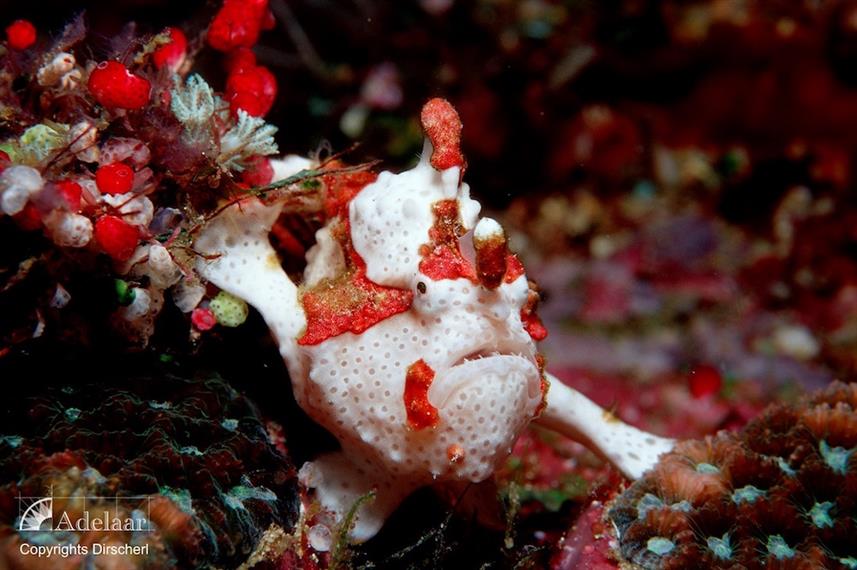
#4 Pipefish
Close relatives of seahorses, pipefish are long, slender fish covered with rings of bony armour and sporting long tubular mouths, singular dorsal fins and small tail fins.
A monogamous-for-life species (how inspirational!) they form pair-bonds and subsequently are usually found in twos. They also come in a huge variety of shapes, sizes and colours, some look like blades of seagrass, others are orange and spiky, some are stripy…and so on. During my five dives in Dumaguete I saw many Pipefish in all shapes and colours.
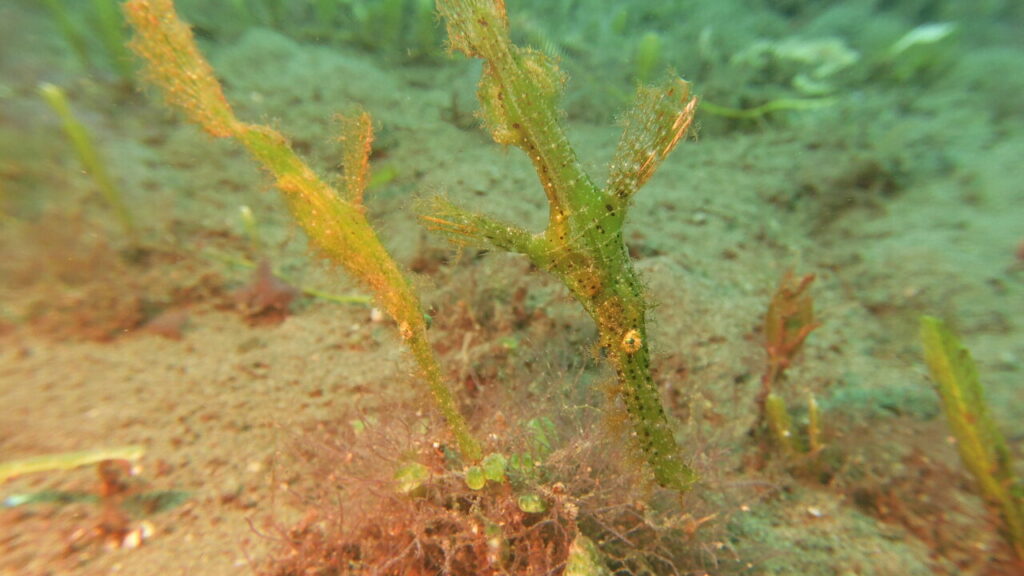
#5 Nudibranch
It’s a well known fact that the Philippines is an excellent place to see Nudibranch. In fact, you can see these vibrantly coloured sea slugs at most dive destinations around the Philippines.
However, Dumaguete is an especially great place for spotting some of the rarer Nudibranch species including the more tiny ones – such those that measure less than 5mm long. I saw countless nudibranch in seemingly every shape, size and colour during my five dives around Dauin and Dumaguete.
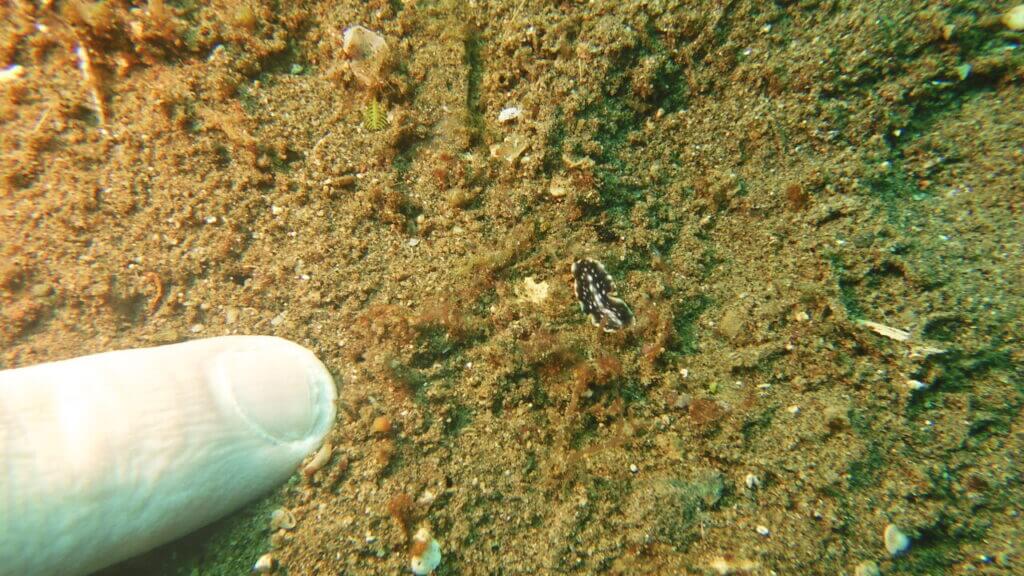
Where to stay in Dumaguete / Dauin
Although your diving experience will be the same (loadsa muck dives with macro critters!) regardless of whether you stay in Dumaguete or Dauin; your experience on land will definitely differ depending on where you stay.
Dumaguete city is cheaper to stay in; there’s also more restaurants and bars here. It’s where you’ll find the vast majority of hostels and backpackers. However, being a city; Dumaguete is much busier and more crowded.
Dauin is far quieter and more peaceful; it is here you’ll find the luxury dive resorts; which are also a little closer to some of the best dive sites. However, Dauin is more expensive and there are less dining options outside of your resort. That said, there are a few budget options.
We’ve actually written a whole separate article reviewing in detail the 10 Best Places to Stay in Dumaguete / Dauin for Divers.
However, for a quick summary, here’s what we consider to be the Best 5 Places to Stay in Dumaguete / Dauin:
- Best (Most Luxurious) Dauin Dive Resort: Atlantis Dive
- Fitness Dive Resort in Dauin: Pura Vida Beach
- Cheap Dauin Dive Resort: AivyMaes Divers
- Best Dumaguete Hostel: Antwet Backpacker’s Inn & Rooftop Bar
- Runner-Up Dumaguete Hostel: The Flying Fish
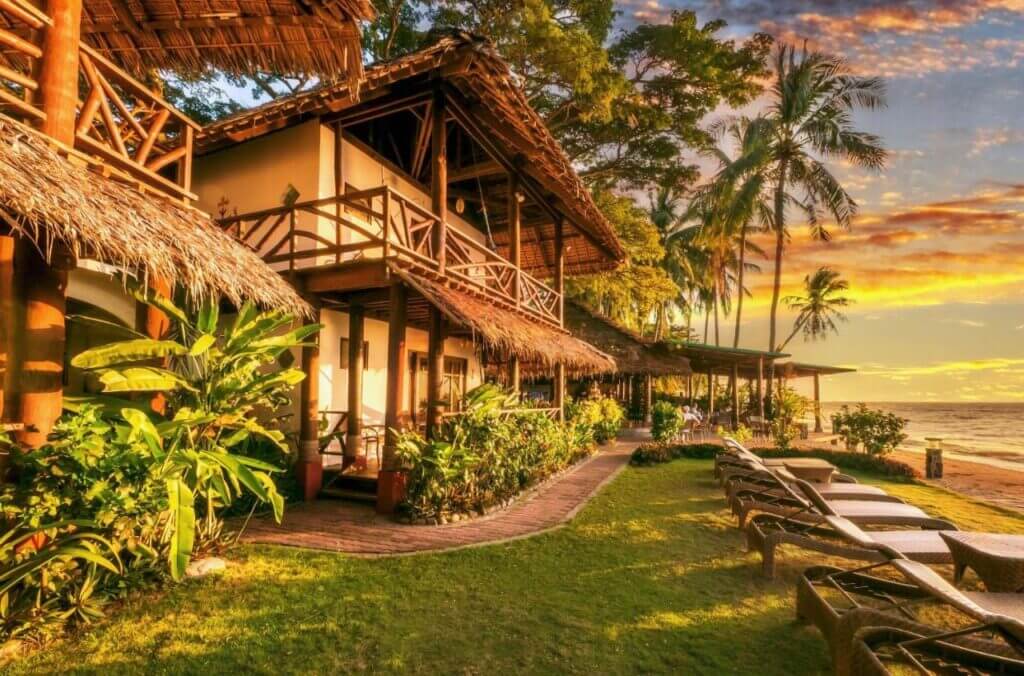
Dumaguete Diving Season
Like most of the Philippines, Dumaguete / Dauin can be dived year round! That said, most local dive centres will tell you that the dry season between December – April offers the calmest conditions and the best visibility.
Also, it’s during the dry season that you can go trekking. Negros island, on which Dumaguete and Dauin, are situated offers some of the best mountain and volcano treks in all of the Philippines.
However, rainy season still offers some kickass diving; for example it’s during October of the rainy period, that octopus mating season occurs!
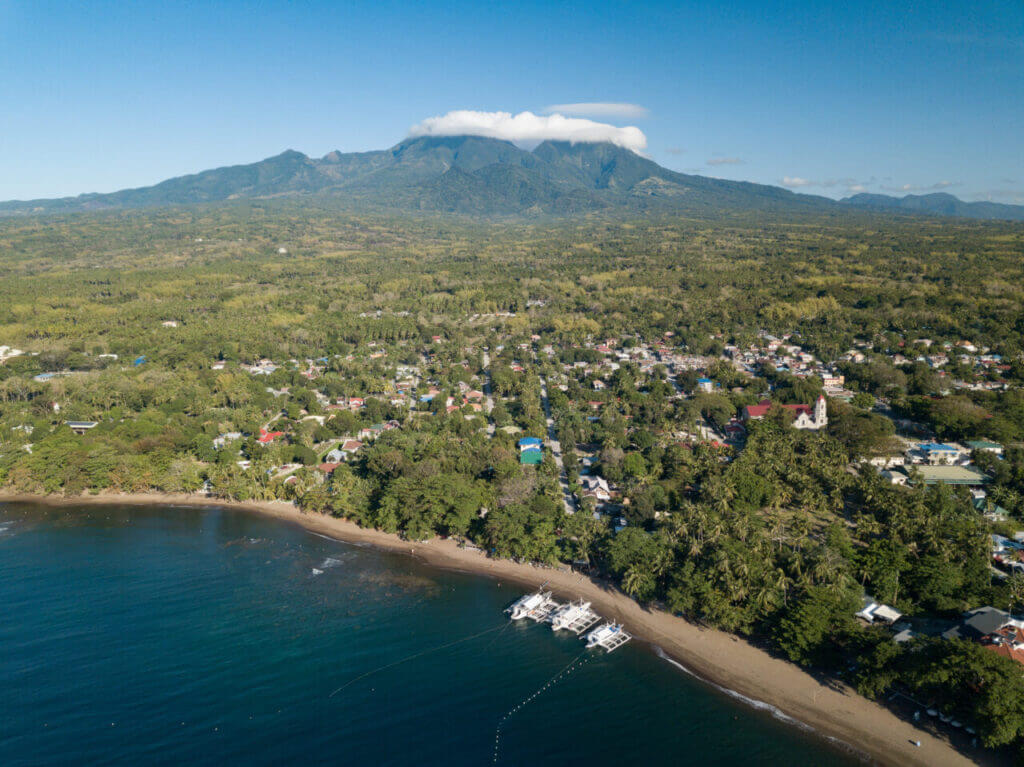
How to get to Dumaguete / Dauin
It’s real easy to get to Dumaguete! Most folks arrive via ferry, which from nearby Bohol, takes just two hours, although you can also get there via a short ferry ride from other nearby islands such as Siquijor and Cebu etc. Check out the ferry schedules at 12goasia where you can also make advance bookings.
You can also fly in via Dumaguete airport – also known as Sibulan airport. As Philippine destinations go, Dumaguete is one of the easiest and quickest to reach! From Dumaguete it’s about a thirty minute tricycle ride to Dauin.
Other Things To Do around Dumaguete / Dauin
Perhaps I just didn’t look hard enough, but I actually found there to be less stuff to do around Dumaguete / Dauin compared to other parts of the Philippines.
Dumaguete city does have plenty of restaurants, hotels and malls plus a few historical churches….but I’m really not much of a city guy.
As for Dauin, most of the quieter beaches are private and can only be visited if you’re staying in one of the resorts that owns them. Also, Dauin town is frustratingly sparse yet sprawling: there isn’t much in the way of dining options (and basically zero nightlife). What little there is, is considerably spaced out. I also couldn’t find anything in the way of viewpoints within Dauin.
However the same, there are a few things to do nearby, most notably:
#1 Waterfalls
There are a whole loada waterfalls as well as some hot-springs in nearby Valencia, roughly a 30 minute scooter ride away from Dumaguete (and 60 mins from Dauin).
My favourite waterfall was Katangan falls. I also liked the nearby Pulangbato falls – plus you also have a whole bunch of other options such as Casaroro, Olayan and Pasalan falls. You can easily bust out all of the best ones in a day.
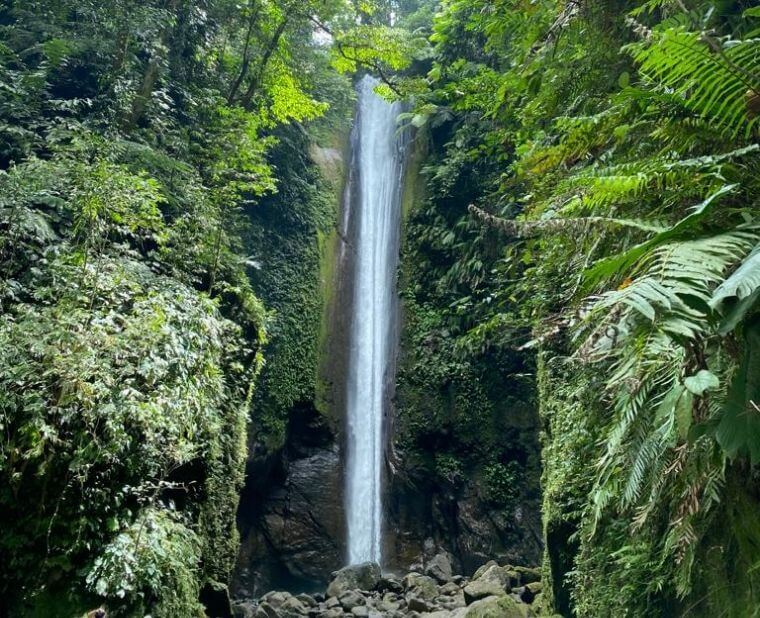
#2 Trek
Negros is one of the Philippines most mountainous islands and it also has a buncha volcanos. Subsequently if you have a decent level of fitness and several days and nights to spare you can engage in some truly kickass trekking. Treks range in length from just a half day to up to a week long so you really have a great range of options.
Check out this resource for info on treks starting in nearby Valencia.
Dumaguete Diving Squad DEBRIEFING:
Alrighty Squad of the Diving! We’ve been through all the stuff ya gotta know when it comes to diving Dumaguete / Dauin; one of the most unique and off-the-beaten-track scuba diving destinations in all of the Philippines!
First we covered Some of the Awesome Animals you can See when Diving Dumaguete / Dauin.
Next we went over the Best Places to Stay there, whatever your budget. Then we covered When to Go followed by How to Get There and Other Things To Do.
And finally you’re on the Diving Squad Debriefing section in which we summarise all that’s been discussed. Lovely fu*king-jubbly!
Oh yeah by the way – if you book accommodation via any of the affiliate links on this page; we will make a small yet nutritious commission at no extra cost to yourself. Thanks! It’s support like that which helps us keep Diving Squad fresh, sexy and as the best damn scuba blog in the multi-verse!!
It also means we can continue to fling our members out into far-flung corners of the world to gather more content for you. On top of all that, it’s actually way cheaper for you to book your accommodation in advance than it is to pay when you get there so everyone’s a winner. Huzzah!!!
Check out Related Content: